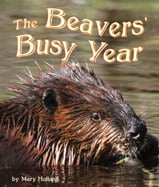Alignment to Standards for KY

| Grade | Number | Standard |
|---|---|---|
| 4 | SC-04-3.4.1a | compare the different structures and functions of plants and animals that contribute to the growth, survival and reproduction of the organisms; |
| 4 | SC-04-3.4.1b | make inferences about the relationship between structure and function in organisms. Each plant or animal has structures that serve different functions in growth, survival and reproduction. For example, humans have distinct body structures for walking |
| 4 | SC-04-4.7.1a | patterns of evidence related to the survival and reproductive success of organisms in particular environments. |
| 4 | SC-04-4.7.1b | Distinct environments support the lives of different types of organisms. |
| 4 | SC-04-4.7.2c | All organisms, including humans, cause changes in the environment where they live. Some of these changes are detrimental to the organism or to other organisms; other changes are beneficial |
| 4 | SC-4-ET-U-1 | ecosystems are defined by the relationships that occur within them. These relationships can be determined through observation of the organisms and their environment. |
| 4 | SC-4-I-S-1 | cause and effect relationships existing between organisms and their environments |
| 4 | SC-4-I-U-1 | all living things depend on their environment and other organisms within it for their survival. Certain patterns of behavior or physical features may help an organism survive in some environments yet perish in others. |
| 4 | SC-4-I-U-2 | environmental relationships extend beyond food (e.g. shelter, seed transport). |
| 4 | SC-4-UD-U-3 | organisms have different structures that are used for different functions. Observations of the structures of a certain organism can be used to predict how that organism functions or where it might live. |
| 5 | SC-05-3.5.2 | all organisms must be able to obtain and use resources, grow, reproduce, and maintain stable internal conditions while living in a constantly changing external environment. |
| 5 | SC-5-BC-S-2 | adaptations of various organisms to their environments through observations as well as print and non-print based resources |
| 5 | SC-5-BC-S-3 | ways that organisms cope with fluctuations (e.g. temperature, precipitation, change in food sources) in their environments |
| 5 | SC-5-I-S-1 | populations and communities within various ecosystems |
| 5 | SC-5-I-S-4 | ecosystems and the interactions occurring within them |
| 5 | SC-5-UD-U-1 | animals and plants have a great variety of body plans and internal structures that contribute to their being able to meet their needs. |
| Primary | SC-EP-3.4.1 | Organisms have basic needs. For example, animals need air, water and food; plants need air, water, nutrients and light. Organisms can survive only in environments in which their needs can be met. |
| Primary | SC-EP-3.4.3 | Students will describe the basic structures and related functions of plants and animals that contribute to growth, reproduction and survival. |
| Primary | SC-EP-3.4.3a | Each plant or animal has observable structures that serve different functions in growth, survival and reproduction. For example, humans have distinct body structures for walking, holding, seeing and talking. These observable structures should be explored |
| Primary | SC-EP-4.7.1 | cause and effect relationships existing between organisms and their environments. |
| Primary | SC-EP-4.7.1a | Organisms require an environment in which their needs can be met. When the environment changes some plants and animals survive and reproduce and others die or move to new locations. |
| Primary | SC-P-BC-U-2 | understand that living things are found almost everywhere on our planet, but organisms living in one place may be different from those found somewhere else. |
| Primary | SC-P-I-S-1 | characteristics of an ecosystem |
| Primary | SC-P-I-S-2 | how organisms depend on their environments |
| Primary | SC-P-I-S-3 | the environment can be affected by the organisms living there |
| Primary | SC-P-I-S-4 | changes in an environment might affect plantsê and animalsê ability to survive |
| Primary | SC-P-I-U-1 | the world has many different environments. Distinct environments support the lives of different types of organisms. |
| Primary | SC-P-UD-S-1 | Students will describe the basic needs of organisms and explain how these survival needs can be met only in certain environments |
| Primary | SC-P-UD-S-2 | identify the characteristics that define a habitat |
| Primary | SC-P-UD-S-3 | Students will investigate adaptations that enable animals and plants to grow, reproduce and survive (e.g., movements, body coverings, method of reproduction) |
| Primary | SC-P-UD-S-4 | Students will analyze structures of plants and animals to make inferences about the types of environments for which they are suited |
| Primary | SC-P-UD-U-2 | plants and animals have features that help them live in different environments. |
| Primary | SC-P-UD-U-3 | some animals are alike in the way they look and in the things they do, and others are very different from one another. |